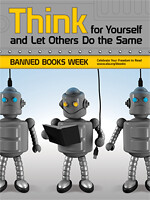The Extraordinary Story of the Largest Covert Operation in History
George Crile
Atlantic Monthly Press
ISBN: 0-87113-854-9
Halfway through reading Charlie Wilson's War I went out and rented the movie. I had the picture of Tom Hanks on a white horse firmly entrenched in y mind the rest of the way through. It was an interesting exercise to see how much of a Cliff's Notes version of the story the movie really is. Charlie Wilson's War, the book, is a much more complete story than the film, and much more exiting.
| Charlie Wilson's War has a cast of characters, real world people, who are like some demented screenwriter's idea for a film version of the A-Team. First is Wilson himself, a hard drinking playboy, who always has a beauty queen on his arm while jet setting around the world at the taxpayers' expense, who represents a straight laced, bible belt district in Congress and who gets the money to run the operation by wheeling and dealing on the hill; Gust Avrakotos, a rogue CIA case officer, working undercover inside his own agency, undermining the stated Afghanistan policy by overstepping his authority at every opportunity; technical wonder- boy Mike Vickers, Green Beret, weapons expert, he is a lowly GS 11 who isn't supposed to even know what's going on and he's the commanding general at CIA headquarters, calling all the shots; Muohammed Zia ul-Haq, dictator of Pakistan, he has a secret program to develop an atomic bomb , meanwhile he is doing everything in his power to help the CIA defeat the Soviets in Afghanistan. |
Despite the movie tie-in, this is not a work of fiction. This is the story of a real CIA operation, which became the largest in history, thanks to the efforts of a congressman from east Texas who made it his business to find a way to shoot down the Soviet Union's Hind helicopters. Charlie Wilson, on a trip to Pakistan, was shown the devastation caused by these flying tanks, which were invulnerable every weapons that the Afghan Mujahideen had.
The CIA was providing the Afghans with World War I era Enfield rifles and some light machine guns to fight the Soviet Army with. The had a $5 million a year budget at the time. Their goal was to annoy and bleed the Russians and keep them on edge, as part of the longstanding policy of containment. Wilson thought that, with a way to shoot down those helicopters, the Afghans were capable of driving the Soviet Army out of Afghanistan altogether. He wanted to abandon containment and attempt to defeat the Soviet Union in Afghanistan. He was only a congressman. He succeeded.
By the time the Soviets left Afghanistan the CIA operation there was spending over a billion dollars a year, half of it provided by Saudi Arabia. Kalashnikov rifles, Stinger missiles, mortars, Swiss Oerlikon anti aircraft guns, and millions of rounds of ammunition were streaming in through Pakistan.
Those Afghan "freedom fighters" who defeated the Soviet army with the help of Charlie Wilson and the CIA, helping to precipitate the fall of the Soviet Union, are the same Afghans who now are fighting again in Afghanistan, some with us and some with the Taliban. The Arab volunteers who went to Afghanistan to join in the jihad against the Soviets are the core of Alkaida. The challenges we face today are a direct result of our success in facing down the last perceived existential threat to or way of life. The biggest shortcoming of the movie is that it mentioned none of this. Instead there was a scene where Wilson fails to get a pittance appropriated to build schools in Afghanistan. In fact there was a multi million dollar AID effort that went on for three years after the defeat of the Soviets, which was finally cut off because the Mujahideen were robbing the aid convoys.









